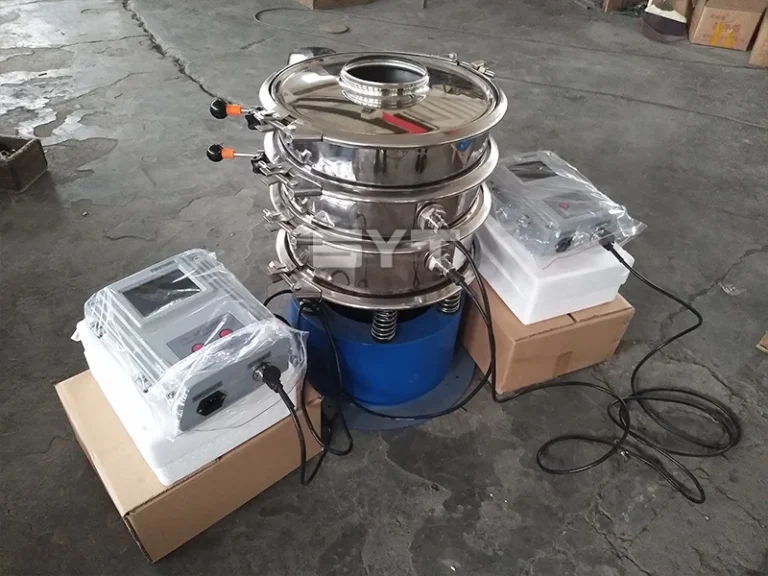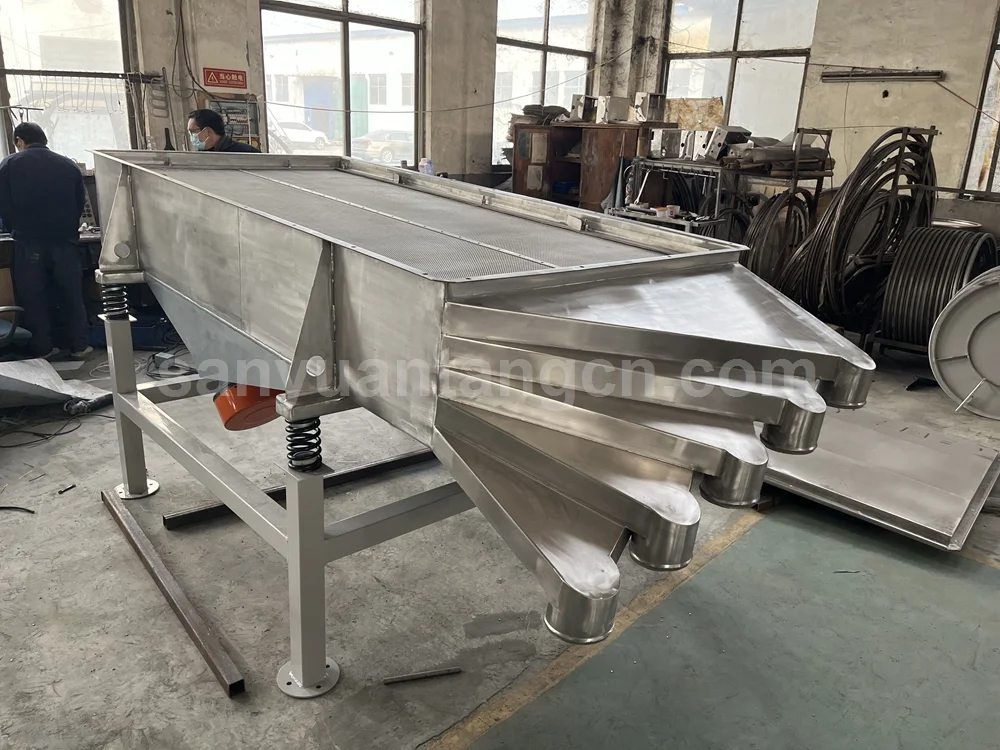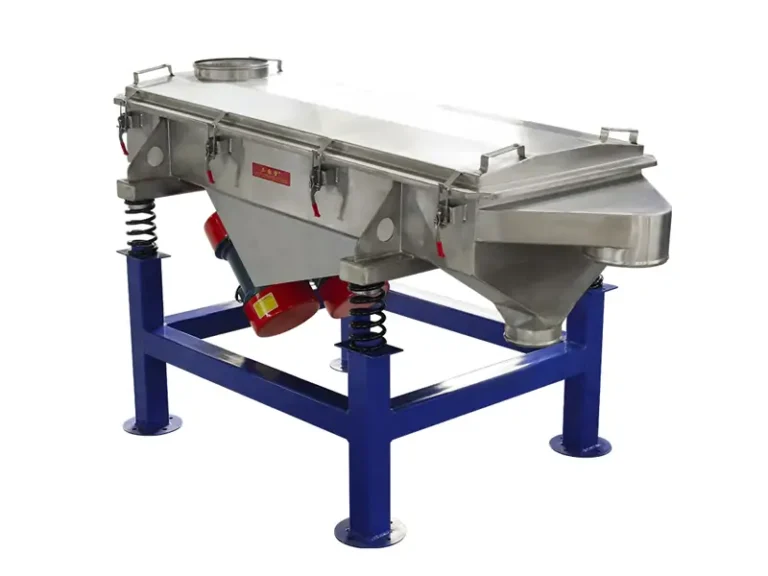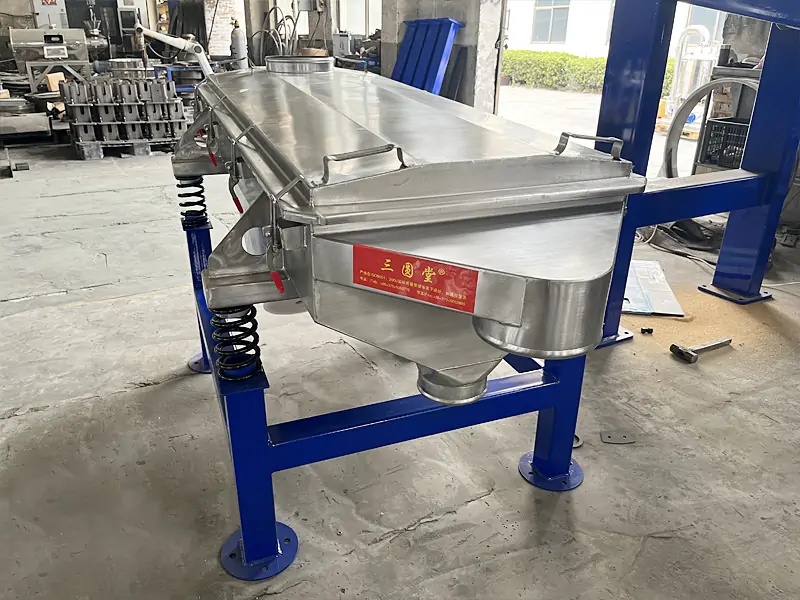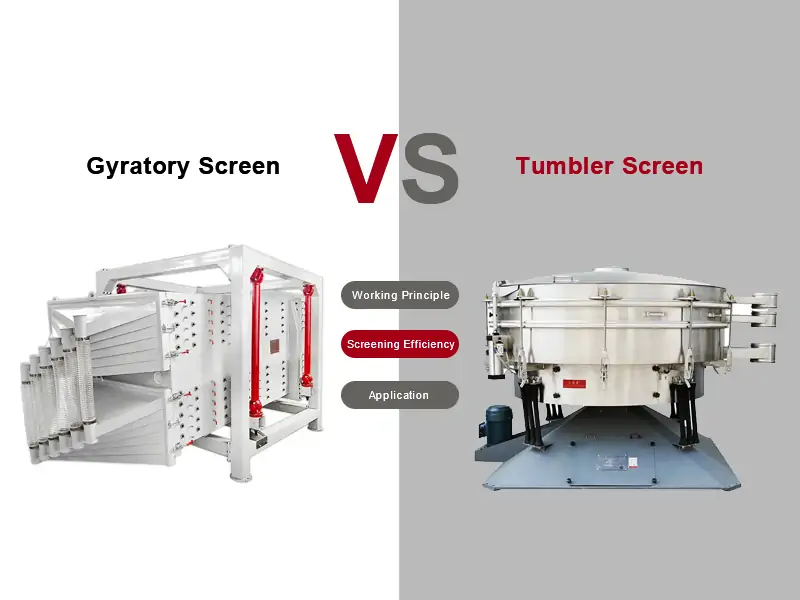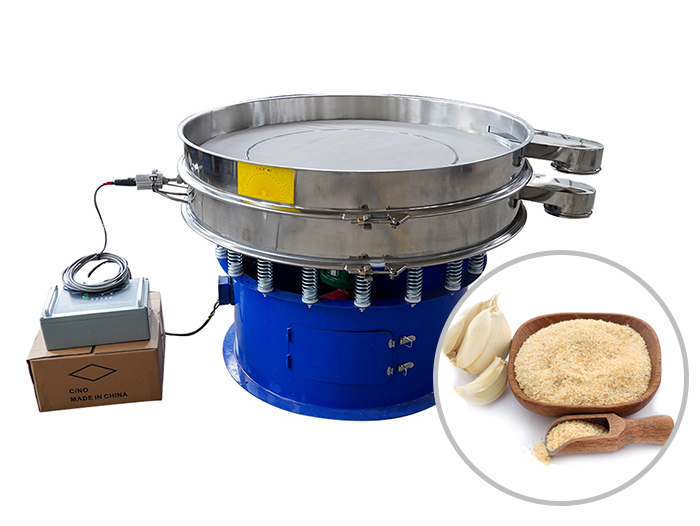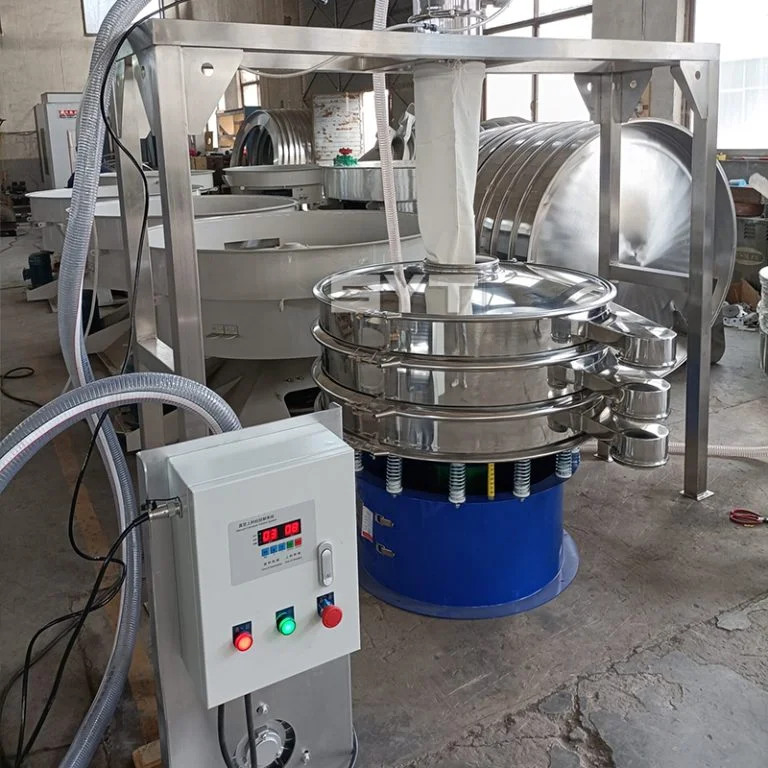In carbon industry production, the screening of materials such as carbon blocks, calcined coke, anthracite, graphite powder, and asphalt coke powder is a critical process that directly impacts subsequent production quality and efficiency. With years of expertise in Vibrating Screen R&D and manufacturing, Sanyuantang Machinery has developed three core solutions tailored to carbon industry material characteristics: Ultrasonic Vibrating Screen, Gyratory Screen, and Linear Vibrating Screen. These provide highly adaptable, stable, and efficient screening solutions to help enterprises achieve high-quality production goals.
 Ultrasonic Vibrating Screens
Ultrasonic Vibrating Screens Gyratory Screens
Gyratory Screens Linear Vibrating Screens
Linear Vibrating Screens
Pain Points in the Carbon Industry and Vibrating Screen Solutions
Carbon materials present significant challenges due to their inconsistent raw material particle sizes, fine powder characteristics, and strong adsorption properties, which lead to frequent clogging. This demands exceptionally high precision and stability from screening equipment. Furthermore, different process stages require distinct approaches to carbon powder handling. Consequently, targeted solutions are essential to address the common issues faced by the carbon industry.
| Frequently Asked Questions in the Carbon Industry | Impact on production | Recommended Vibrating Screen | Vibrating Screen Solutions |
| The raw material powder is extremely fine, making manual screening extremely difficult. | Factors Affecting the Purity and Conductivity of Carbon Products | Ultrasonic Vibrating Screen | Ultrasonic waves can still maintain effective vibration even for minute powdered materials. |
| Particle size is inconsistent, product specifications are not uniform | causing instability in the pressing and roasting processes | Linear Vibrating Screen | Products are graded through multi-layer screens to strictly control particle size ranges. |
| High production demand, inefficient traditional equipment | Production capacity struggles to overcome bottlenecks | Gyratory Screen | Large-area screen surface design delivers high screening output with low energy consumption. |
| The toner has strong adhesion and tends to clog the screen mesh. | Frequent shutdowns for cleaning the net result in low efficiency. | Ultrasonic Vibrating Screen | Use ultrasonic shock to dislodge toner particles and prevent screen clogging. |
| Severe dust generation during the screening process | Pollute the environment and endanger human health | Linear Vibrating Screen / Gyratory Screen | Features a fully enclosed structure with an added dust removal port. |
Table of Contents
Core Screening Equipment and Adaptive Solutions
Linear Vibrating Screen: Specialized for Large-Particle Pre-processing of Carbon Blocks
Application Scenarios: Primarily used for fragment removal of calcined carbon blocks and pre-screening of large-particle raw materials.
Adaptive Advantages:
- Long-Distance Conveying Screening: Material travels along a linear trajectory within the equipment, enabling both material classification and extended-distance conveying. This facilitates the design of long-distance screening production lines.
- High Impact Resistance: Features a heavy-duty screen box and high-tension mesh structure to withstand impacts from falling bulk materials, reducing downtime caused by impact damage and lowering maintenance frequency.
- Flexible Angle Adjustment: The screen surface angle can be flexibly adjusted according to different materials’ screening requirements, balancing material throughput while ensuring screening accuracy.
Ultrasonic Vibrating Screen: Optimal Choice for Fine Material Screening
Applications: Designed for fine materials below 200 mesh, such as graphite micropowder and asphalt coke powder, enabling impurity removal and classification operations.
Adaptive Advantages:
- Effective Screen Clogging Prevention: Equipped with ultrasonic screen cleaning technology, high-frequency micro-vibrations disintegrate adhered particles, resolving screen blockages caused by fine powder agglomeration and electrostatic adhesion.
- High Screening Precision: Generates horizontal, vertical, and inclined three-dimensional motion trajectories during operation, significantly enhancing fine powder pass rate. Ensures purity of screened powder to meet stringent production requirements for electrode and negative electrode materials.
- Convenient Operation & Maintenance: Supports variable frequency adjustment for optimizing parameters based on material properties. Modular structure facilitates daily cleaning and maintenance.
Practical Application Case: A Shanxi carbon enterprise has collaborated with Sanyuantang Machinery for over 5 years, consistently procuring this vibrating screen for graphite micropowder processing. Users report excellent screening stability and low comprehensive maintenance costs over extended operation.
Gyratory Screen: Multi-layer classification equipment for multi-grain-size materials
Application Scenarios: Suitable for multi-grade proportioning and impurity removal of 4mm~12mm aggregates such as calcined coke and anthracite coal.
Adaptive Advantages:
- Multi-layer Synchronous Screening: A single unit can integrate multiple screen layers, separating coarse aggregates, medium particles, and fine powders in a single operation. This simplifies production processes while reducing equipment footprint.
- Preserves Material Integrity: Employing a rotary oscillation motion that mimics manual screening, it minimizes material breakage during processing—particularly effective for protecting fragile graphite raw materials.
- Eco-Friendly & Wear-Resistant: Polyurethane-edged screens paired with a fully enclosed structure enhance wear resistance and extend service life while effectively containing dust emissions, meeting environmental production standards.
Screening Solution Summary
The carbon industry handles diverse materials, requiring screening processes tailored to specific properties:
- For large bulk materials requiring long-distance transport, prioritize Linear Vibrating Screens.
- For grading coarse and fine materials with high-efficiency processing demands, Gyratory Screens are ideal.
- For fine powders requiring high-purity screening, Ultrasonic Vibrating Screens are best suited.
Recommendations for Selecting Vibrating Screens in the Carbon Industry
When selecting vibrating screen solutions for the carbon industry, it is essential to first understand the specific requirements and the functionalities of vibrating screens. Below are some common questions you should clarify before choosing a vibrating screen:
- What are the properties of the material? Particle size, stickiness, adsorption, and static characteristics all need to be understood.
- What is the required screening output? How much material needs to be processed per hour?
- What is the purpose of screening? Do you need to classify the material? If so, how many grades are required, and how fine is the required classification?
- What are the operating conditions of the equipment? Are explosion-proof, anti-static, dust suppression, or noise reduction features required?
- Are there any special requirements? For example, do you need automatic feeding and discharge functions?
FAQs
Q1: What types of carbon materials are suitable for ultrasonic vibrating screens?
A1: Ultrasonic vibrating screens are particularly suitable for extremely fine, easily agglomerating, or highly adsorbent carbon powder materials such as graphite powder, carbon black powder, and conductive carbon powder. Ultrasonic technology delivers superior vibrating screening performance for fine powders.
Q2: Our carbon blocks and coke powder have a wide particle size range. Can a single vibrating screen handle this?
A2: We do not recommend using a single vibrating screen for all material types. Large carbon blocks and calcined coke are best processed using linear vibrating screens. Fine powders (e.g., graphite powder, asphalt coke powder) are better suited for ultrasonic vibrating screens, as ultrasonic technology effectively prevents screen clogging and blockage. For materials with a wide particle size range, consider configuring a rotary screen for raw material classification.
Q3: Can these vibrating screens meet environmental and dust-free workshop requirements in the carbon industry?
A3: Yes. Vibrating screens can be equipped with fully enclosed dust covers and dust extraction ports to prevent carbon powder leakage.
Q4: Can you customize or modify vibrating screens based on our existing production equipment?
A4: Absolutely. We can tailor vibrating screens to your production volume requirements, material properties, or special needs (e.g., anti-static or dust-proof features).
For detailed information, please contact us with your specific requirements. Contact us for a bespoke solution.
Conclusion:
Leveraging years of technical expertise in vibrating screen technology and deep insights into the production challenges of the carbon industry, Sanyuantang Machinery consistently prioritizes practical enterprise needs to deliver tailored, high-performance screening solutions. For screening equipment procurement or customized solutions, contact our technical team to obtain a dedicated plan that enhances your production efficiency and product quality.
